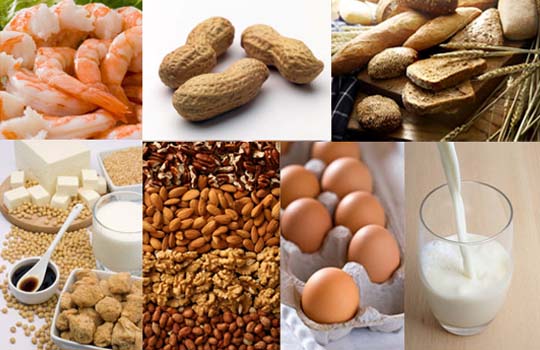
The Difference Between Food Allergy And Food Intolerance
There is a distinct difference between people who suffer with food allergies and those who have a food intolerance. By understanding the differences, it will enable you to see if either you or any member of your family suffer from a health issue that is food related. Here are the top indicators to look out for.
What is a Food Allergy?
1. If you have a food allergy your immune system will react to that particular type of food that you eat. For example gluten.
2. The body will physically react quickly after you or anyone else has ingested something that they are allergic too.
3. There are several symptoms that will indicate an allergic reaction, such as a rash, itching, possible redness and swelling of the mouth. In extreme allergic reactions, a food allergy can cause breathing problems.
4. Even a tiny amount of the food that you eat may cause an allergic reaction. This can be life threatening and will require immediate medical intervention.
5. If you have a food allergy then this food type must be totally avoided.
6. Doctors can prescribe ‘Epi-pens’ for those who suffer with extreme allergic reactions, this is a portable treatment that can be kept with that person at all times in case of emergency.
What is Food Intolerance?
1. The physical reaction that someone with a food intolerance has, will differ dramatically from a person with an allergy. The reaction tends to be less obvious, although it is very uncomfortable and unpleasant. Symptoms can include bloating of the stomach a few hours after eating. For example gluten or dairy intolerances.
2. An intolerance to a food group is normally signified by the digestive systems inability to break down the food type effectively and efficiently.
3. Although the symptoms are not life threatening, they do effect the general wellbeing and health of someone who suffers. Therefore this quite often requires significant alterations in life style and food that can be eaten.
4. Identifying a food intolerance can take longer than discovering you gave a food allergy. Doctors and nutritionists will often suggest that you gradually dispel certain foods from your diet to work out which ones are causing the problem and then gradually add them back in to see how your body reacts. There are lots of gluten free alternative available in the supermarkets.
5. Food intolerance is therefore far more common than someone with a food allergy.
Common Symptoms of Coeliac Disease
- Diarrhoea is a common symptom of being a coeliac. Because the body cannot fully absorb nutrients it can lead to malabsorption.
- Abdominal pain and bloating which causes a rumbling tummy and flatulence can also occur.
- Weight loss.
- Because of the body’s ineffectiveness to absorb nutrients, iron deficiency can be a problem which in turn leads to tiredness and fatigue.
- Oedema can be a side effect of suffering from coeliac disease, the swelling of the hands, feet, arms and legs is caused by a build-up of fluid in the body.
Harry Price is a freelance writer from the south coast. In his sparetime, he enjoys a vast array of activities, from cooking and travelling to rock climbing and running.
